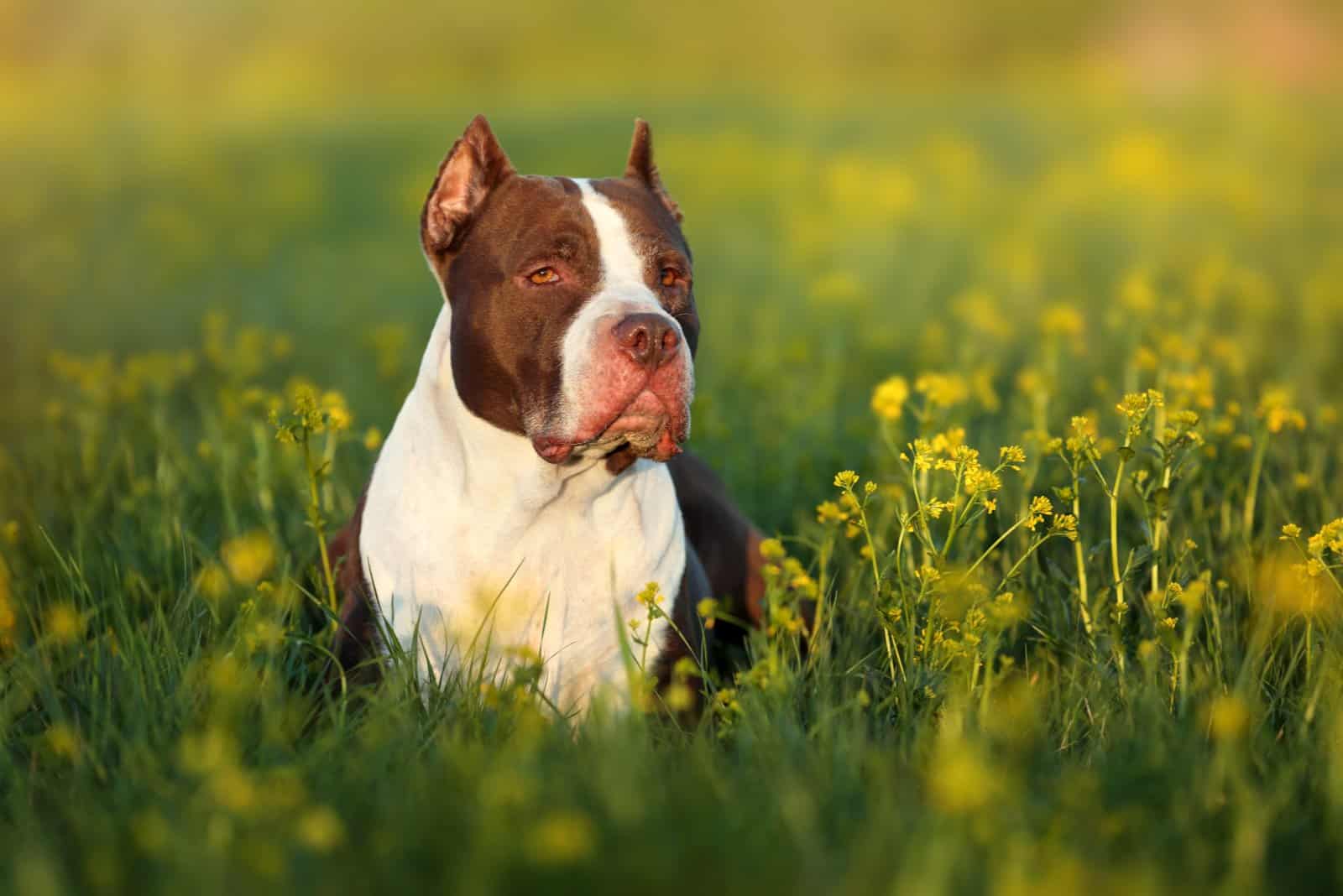They may be a bit intimidating at first, but once you get to know this breed, you’ll realize that Pitbulls are one of the sweetest creatures in the world. The Pittie smile is something special! What’s even better than a Pitbull dog is a puppy Pitbull.
That’s why today’s focus is on Pitbull growth charts!
We will discuss the many difficulties of puppy development through stages. We’ll talk about what happens in which stage, and how to make their transition from puppyhood to adulthood easier.
While we can’t predict how much weight a Pitbull puppy may have, we can look at Pitbull weight charts and try to find an approximate answer.
Future dog owners should take a look at our Pitbull growth charts to get a general idea of what’s waiting for them once their Pitbull pup grows up.
Growing up is already difficult for Pitbull owners and their pups. We’re here to prepare you for this wild journey!
As you can see down below, you have charts of Pitbull puppy development by months. Each month, a Pitbull puppy will add weight for a certain percentage. Some months are characterized by a large weight gain, while others remain rather average.
I recommend you take a good look at them if you’re planning on getting a Pitbull puppy. Be a good dog owner and follow your pup’s growth, will you?
Average Weight And Size Chart For Different Pitbull Types
[table id=331 /]
Pitbull Puppy Weight Chart For Males
[table id=332 /]
Pitbull Puppy Growth Chart: Females
[table id=333 /]
A Word On The Pitbull Breed
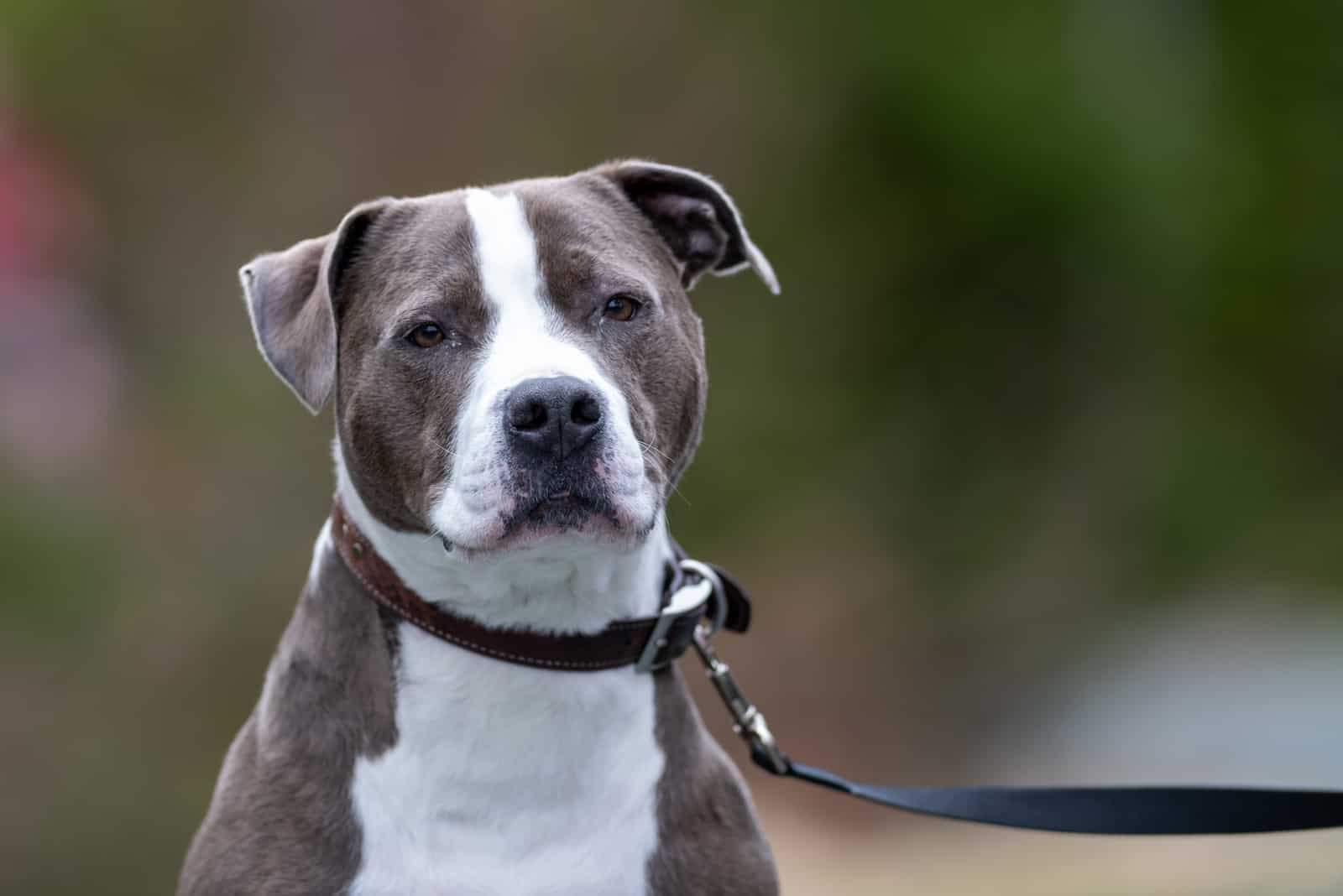
Even though the American Kennel Club (AKC) doesn’t recognize them, the American Pitbull Terrier is one of the most popular dog breeds in the States. The UKC does approve of them, but it still doesn’t help their notorious reputation.
But, why is that so? Why are people having so many issues with this breed?
I believe it’s all because of their powerful appearance. When you get deep into the breed’s characteristics, you’ll see how wonderful Pitties are. I mean they’re even sweeter than usual lap dogs, such as the Maltese or the Chihuahua.
Pitbulls are sociable creatures that are sweet and caring. If you train them properly, you can leave them alone with kids. In fact, they’re often called nanny dogs. These protector dogs are also valuable companions that will amaze you with their intelligence and playfulness.
Pitbulls are dogs that require discipline and a firm guide. You shouldn’t get one if you’re not planning on handing out attention every minute or so.
I would definitely recommend adopting a Pitbull. You won’t find a sweeter guard dog than this sweet boy.
Appearance Traits: What Does A Pitbull Dog Look Like?
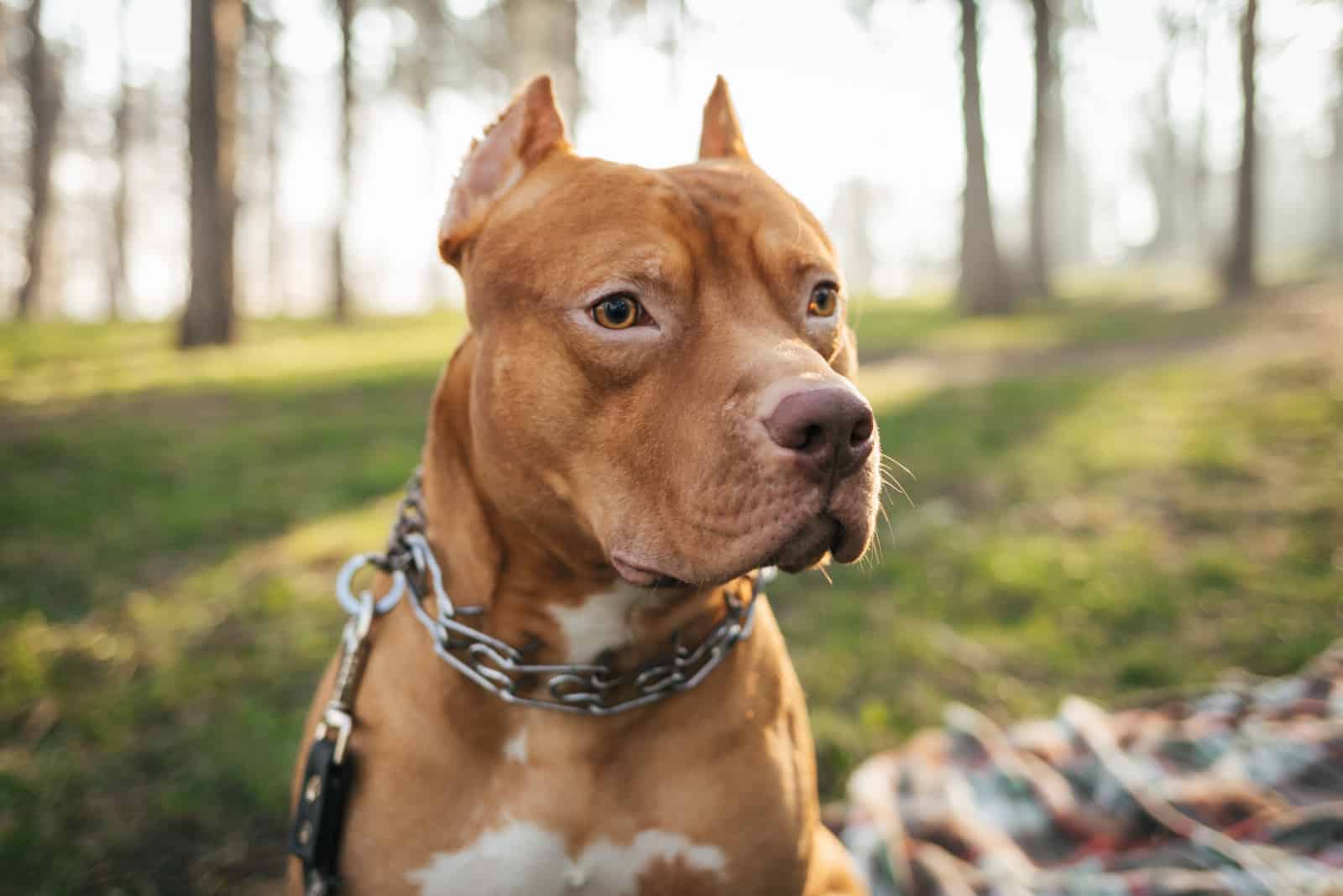
Pitbulls are active dogs with athletic traits. They were bred from Bulldog and Terrier males and females. They love playing all sorts of games with their owners, especially those that require their mental skills.
When you take a good look at a Pitbull dog, you’ll notice they’re taller rather than chubby. Their body is muscular, and their frame is big and wide. A Pitbulls’s body is covered in a silky-smooth short coat that doesn’t shed. I mean, is there anything you won’t like with this dog breed? Being low-shedding dogs gives them extra points.
Pitbulls come in a wide array of coat colors. You can usually see them sporting black, white, brown, or brindle coats, as well as combinations of the listed colors.
Even though a long, pointed tail, a broad chest, a blocked head, and an athletic figure are a Pitbull’s signature traits, it’s their small, round, warm eyes that will win you over. Of course, we can’t forget about that lovely, bright Pitbull smile.
Pitbull Puppy: Growing Up 101
Raising a newborn puppy is parenthood like any other. When born, puppies are helpless and rely completely on their mom and our help. But, you’ll be surprised when they start rapidly growing. This continuous growth will last for 12 months, and then it will slow down until the dog is fully grown.
Newborn Pitbull puppies weigh only seven to 10 ounces each. There can be up to 14 puppies in one litter, but the average number is six. Puppies are as blind as a mole, and they don’t look very different from it either.
With no sight and no hearing, puppies rely on their mom for food and comfort. Basically, all they do as newborns is eat, sleep, poop, and grow. As soon as they turn three weeks old, the puppies will get their sense of hearing. This is also the time when they start making their first noises, similar to barking. You should listen to them trying to bark like big boys… it’s unbelievably cute, and they sound like squeaky toys.
Soon enough, the puppies will get their first teeth and start using them rapidly.
Months two and three in a puppy Pitbull’s life are full of new beginnings, changes, and valuable lessons. At this period, it’s crucial to start socializing the puppies. Early socialization is key if you want a well-functioning dog in the future. Puppies are submitted to new people, animals, noises, and different textures. In fact, this is the first time they touch grass! Seeing them go out and about and exploring their surroundings is really heartwarming.
Despite the fact that it’s recommended for the puppies to exercise and meet new surroundings, I would not recommend strenuous exercise. Puppies have growth plates that are still developing, and you don’t want to mess up their development with overexercising.
Most dog breeders decide that this is the time for a puppy to go to its new furever home. A two-month-old Pitbull puppy is ready to embark on a new adventure. In these short eight weeks, most puppies learn their first obedience and potty lessons, and they start on solid foods.
Finally, some good use of those pointy little teeth!
I like to joke and say that the breeder has done the easy work. The troubling period is waiting for the owner. You see, after month two, the puppies enter this phase that I like to call puppy teen years. For me, it is the four-month old puppy that really pushes my limits no matter if it’s a Pitbull, a Pitbull mix, or any other dog breed. They show their character traits, act stubborn, and sharpen those teeth (which are now permanent) on anything in the house.
Teen years, just like with human teenagers, are the stage of great changes. The growth spurt continues on, and puppies are almost there. Just a few more months until they’re considered adults.
Also, in this development period, breeders and dog owners sometimes spay or neuter puppies. This is something I will address in the following chapters.
As far as I’m concerned, puppyhood is now over. Puppies are now entering the world of adult dogs. What I recommend to everyone who owns dogs is to keep a close eye on a growing puppy for some physical changes. Moreover, I advise and urge you to work on their social skills.
You don’t need a Pitbull puppy that will turn into an aggressive adult. They’ve got plenty of bad reputations already!
Welcome To Adulthood!
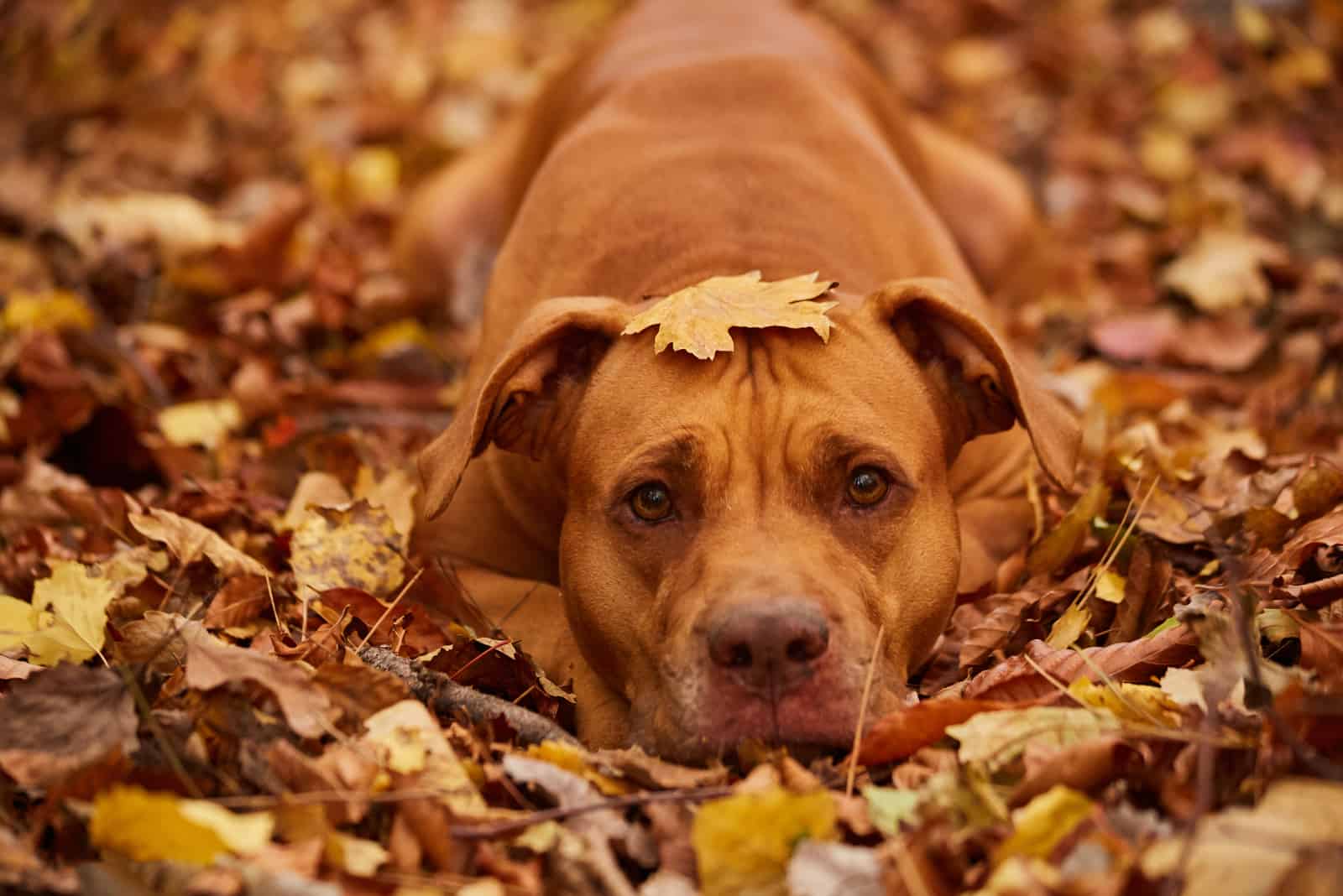
Well, this is it.
A growing Pitbull puppy has finally reached adulthood and it’s one year old. But, does he feel any different?
Actually, I’d say no because the growth will continue after 12 months of age. Years two and three should be the limit when your pup stops growing and acquires its final adult size.
A dog’s adult weight will be supported with an additional 10 pounds each month until it reaches its final, healthy weight.
One of the biggest transitions that happen on the verge of adulthood is going from puppy food to adult food. Puppies need dog food that will help them grow into fit individuals. Adults need food to satisfy their energy levels, and give them strength to go through the day.
I always advise you to get protein-based food no matter which stage your Pitbull is in. Dogs are carnivores, and as such, they need real animal protein to fulfill their urges.
Your goal now is to train your dog to perfection (easier said than done, huh?) and to help him function normally in society. I wouldn’t worry about this since Pitbulls are highly intelligent creatures that master any training without much fuss.
How Big Do Pitbulls Get?
Every dog owner is curious about how his dog will turn out to be. That’s why many people opt to do DNA testing, or perform some simpler guesses.
For example, many people guess their puppy’s size based on the parent size or by looking at the puppy’s paws. Those puppies in the litter with bigger paws will definitely become big girls or boys.
When Does A Pitbull Stop Growing?
I can’t really answer this question because there is no strict milestone when the puppy stops growing. This is a different stage for every puppy, especially for males and females.
For most Pitbulls, the growth stops when they are two or three years of age. Still, the weight that pups add after their first birthday is significantly reduced. I reckon it’s approximately 10 pounds a month. Males will, of course, add up more weight than females.
Is A Puppy’s Growth Affected By Spaying Or Neutering Procedures?
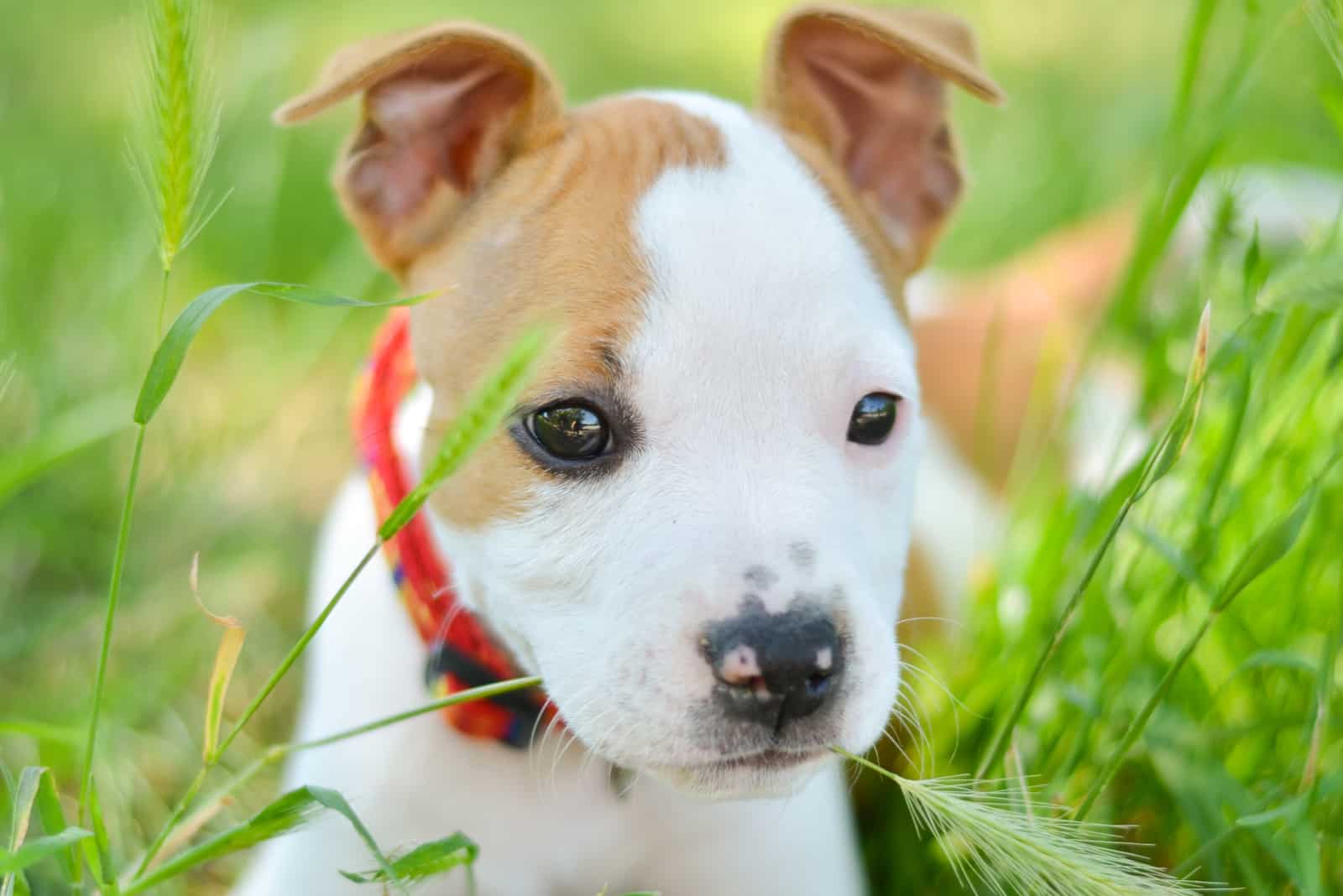
Many dog experts claim that spaying or neutering at the age of six months is perfectly acceptable. However, I wouldn’t agree with them. As I like to say: let the puppies be puppies until it’s time for a big dog’s collar.
If I had a Pitbull, I wouldn’t follow these recommendations. You see, at this stage, male Pitbulls are still growing. I mean, what is six months compared to years of adulthood? It’s good to do these procedures while the dog is young, but this is far too early. Pitbulls won’t stop growing for another year or so. That’s why any period after the 12th-month milestone would work.
Females should wait until they go through their first heat cycle. After that, it’s completely fine to spay them if you don’t want surprising Pitbull pregnancies.
To answer the burning question, spaying or neutering won’t significantly affect the dog’s growth. In fact, it may not leave any consequence at all. But, I always like to be safe rather than sorry.
What Is BCS Or Body Condition Score?
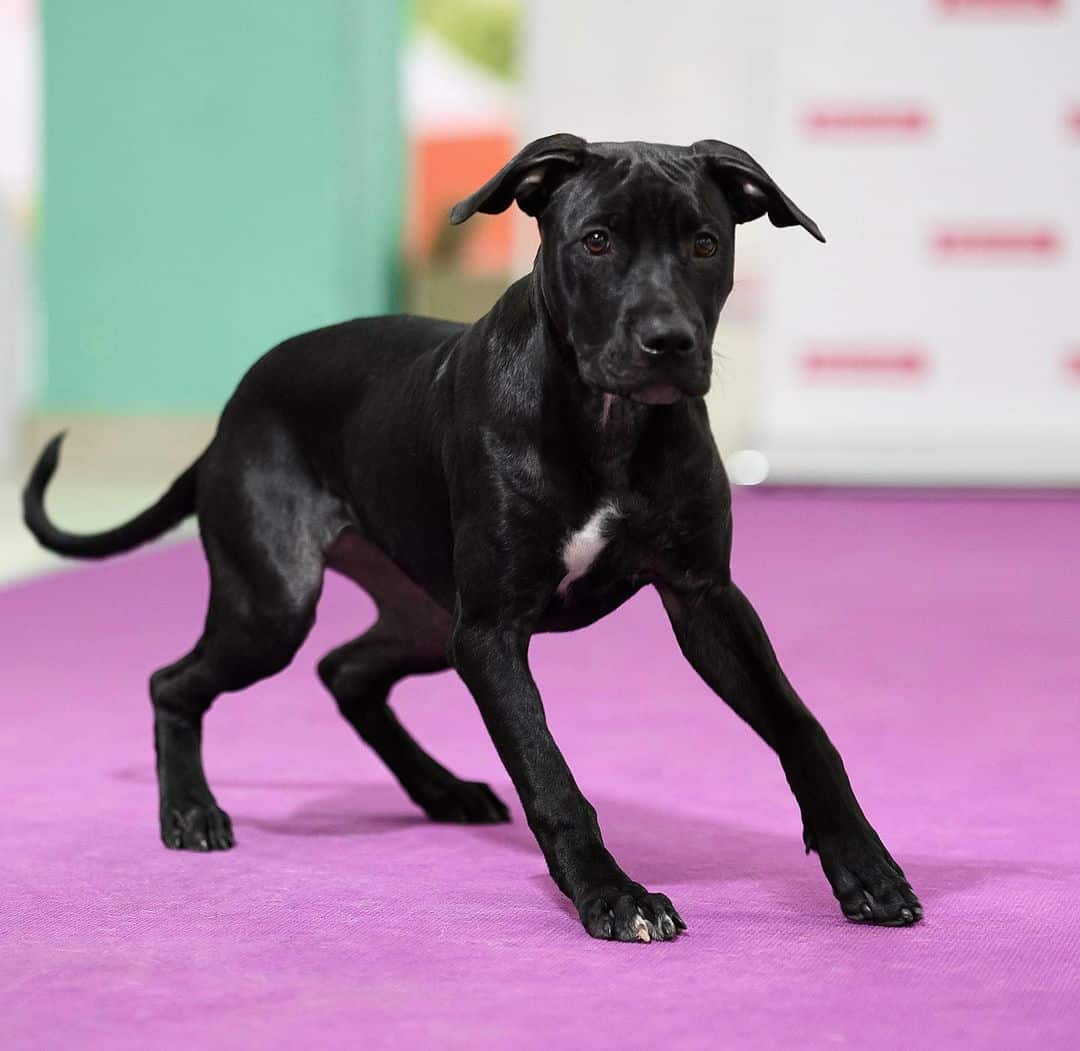
Photo from: @ensochka
If you’re fairly new in the dog raising world, you probably haven’t heard of the BCS. Well, what if I tell you you have!
You see, the BCS or Body Condition Score is a sort of weight calculator for ideal body mass. Yes, it is just like the BMI calculator we use! But, the BCS has a scale rather than an ideal number.
This scale helps to determine whether your Pitbull is overweight, underweight, or has ideal weight. The scale goes from 1 to 9. The highest number, 9, is a mark of an obese dog. The lowest number is a sign that your dog is severely underweight.
But, what’s the ideal score? Isn’t it obvious? It’s number 5! Dogs that are a 5 should have a visible waist, and their ribcage shouldn’t be visible or covered in too much fat.
Helping An Overweight/ Underweight Pitbull
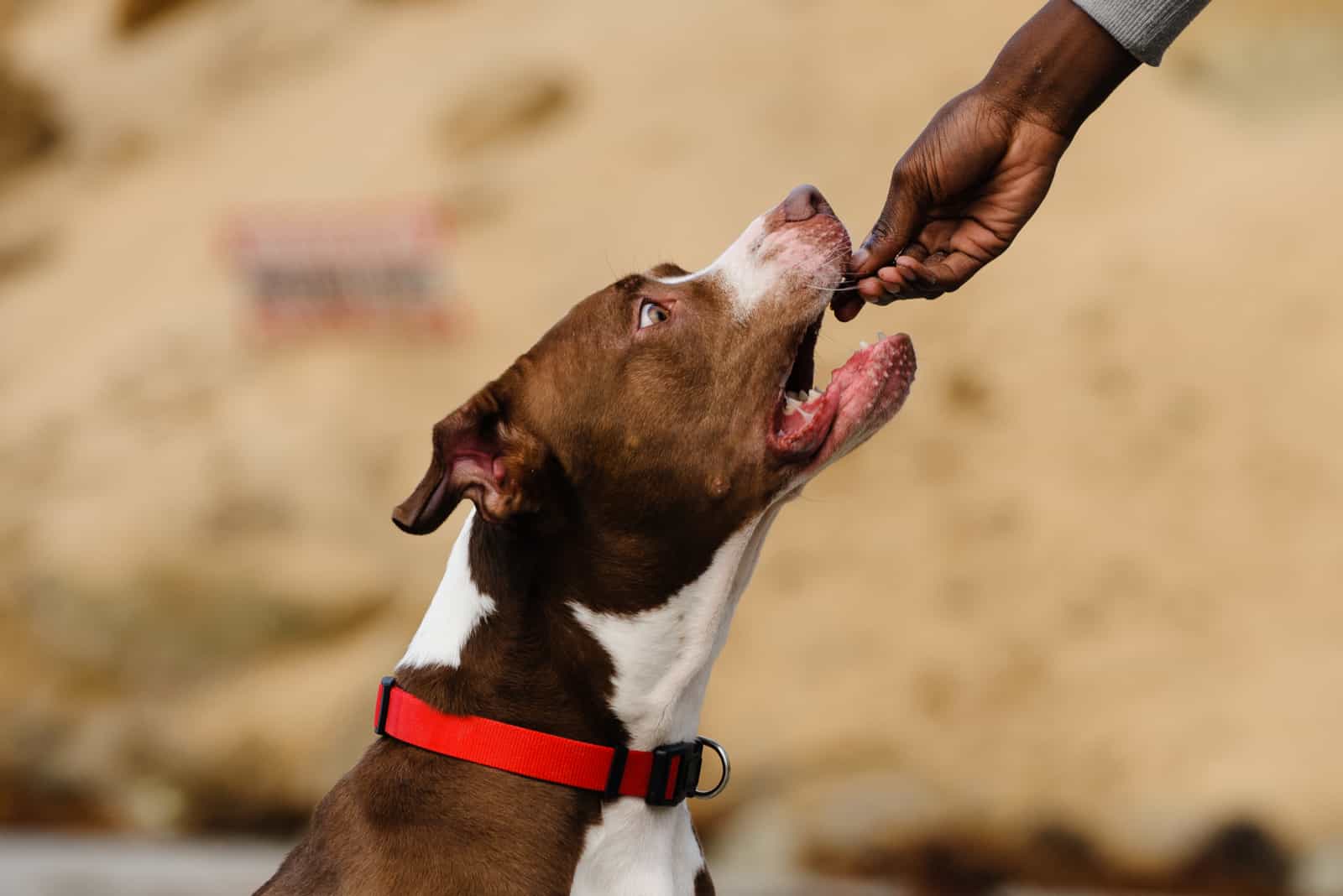
Pitbull growth charts are an excellent source you should consult when wondering if your Pitbull is at its ideal weight. Still, you shouldn’t fall into the trap. Pitbull weight and size charts carry only average numbers. They’re breed standards that you must follow or else.
I recommend you stay relaxed when keeping track of how your puppy grows. Not every dog grows at the same rate, and it’s totally fine if your doggo is slightly over or under the curve.
But, major problems occur when a dog’s health and overall life quality is seriously threatened.
Dogs that carry a BCS score lower than 5 have issues with being underweight. You can easily spot an underweight dog. They have a visible ribcage. But, ribs aren’t meant to be seen. Well, they can be slightly visible, but not protruding.
Overweight dogs carry a BCS score above the number 5. These dogs may look cute and chubby, but obesity is not sweet at all; not with this dog breed. If you count out health issues, then you’re definitely overfeeding your dog, and that’s why he’s so fat.
You should review the food you’re giving to your dog. If it is packed with fillers, carbs, or grains, then it does nothing good for your dog. Such dog foods only add unnecessary weight. Also, if you hand out treats more than you should, you can expect a few more pounds on the scale.
An overweight dog has no waist. Its ribs are hidden deep under the ribcage, and can’t be easily felt. Pitbulls are active dogs, and as such, they need their muscle mass. Fat won’t benefit them.
That’s why you should reduce the treats, change the dog food, and work out more. Cardio exercises done together with your dog will do wonders in no time. And, they will keep the dog’s brain busy and energy levels low.
To help an underweight dog, you should have a vet run a test to see if there are any severe health conditions. If there is, the vet will prescribe a medication that will help your dog gain weight. Maybe switching dog food wouldn’t be bad either. Some popular dog food brands are poor in nutrients. Be careful, so you don’t fall in the trap.
What Kind Of Dog Food Do These Dogs Need?
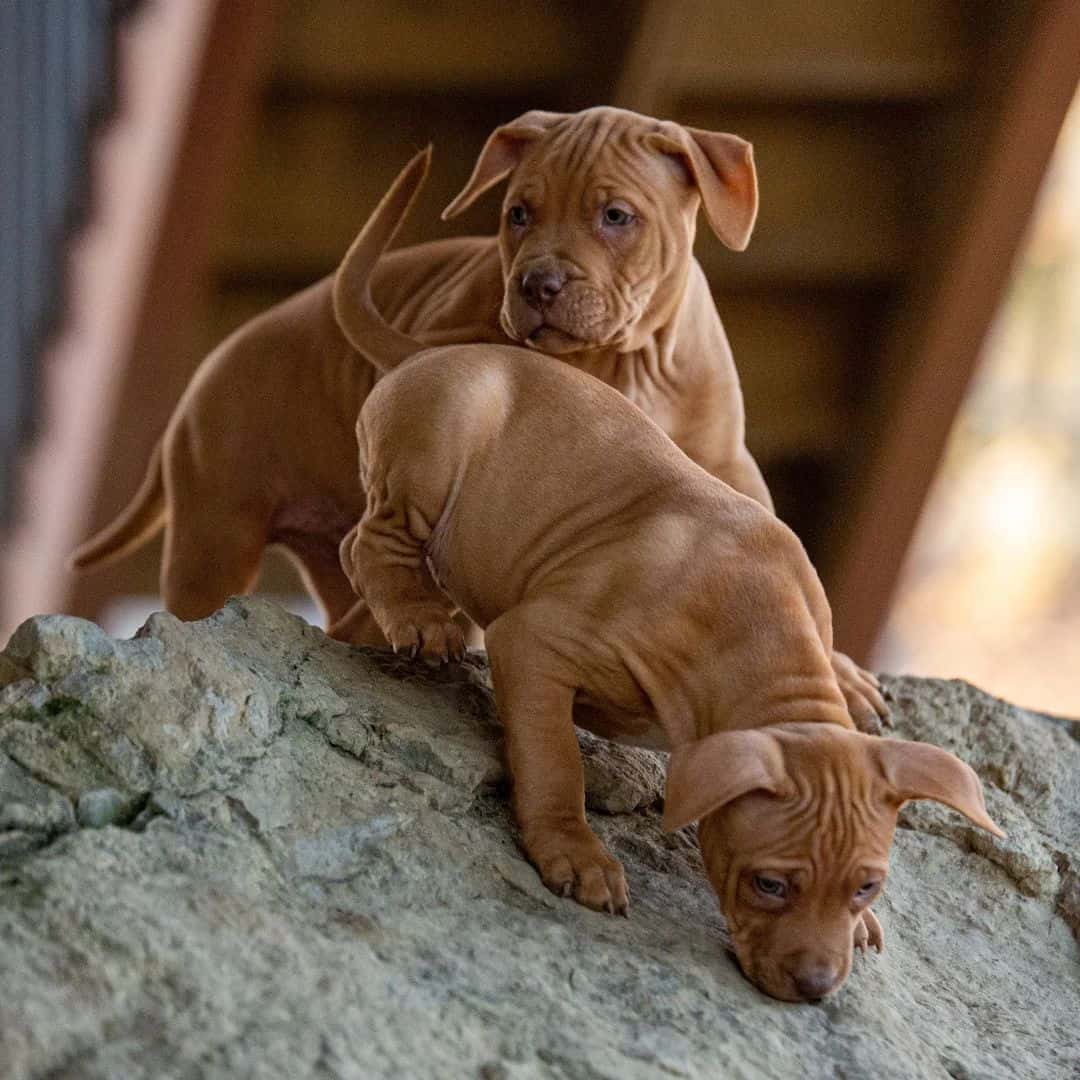
Photo from: @rudy_and_sage
Proteins, fats, good carbohydrates, fibers, vitamins, minerals, fatty acids…
These are all nutrients that should be in a package of dog food. To be honest, your dog doesn’t get anything from too many grains or fillers.
As you already know, dogs are carnivores. Man, they sure like their meat raw. Even though times have changed, dogs still want meat as the base of their meals.
For underweight dogs, I recommend beef, pork, or lamb-based dog food. This should help them add pounds faster.
Overweight dogs need light meals. Go with poultry-based dog food. Some dog brands have even gone so far as to create light kibble for such dogs. While this is a good idea, I’d still look at the back and see if that light meal is as light as a feather. Before I forget, limit your adult Pitbulls to one meal a day, or a few small ones, but don’t go over the allowed kibble limit. Overfeeding is another reason why our Pitties are becoming obese.
See Also: The Pitbull Raw Diet Explained (With Recipes)
Are There Any Health Problems That Affect A Pitbull’s Growth?
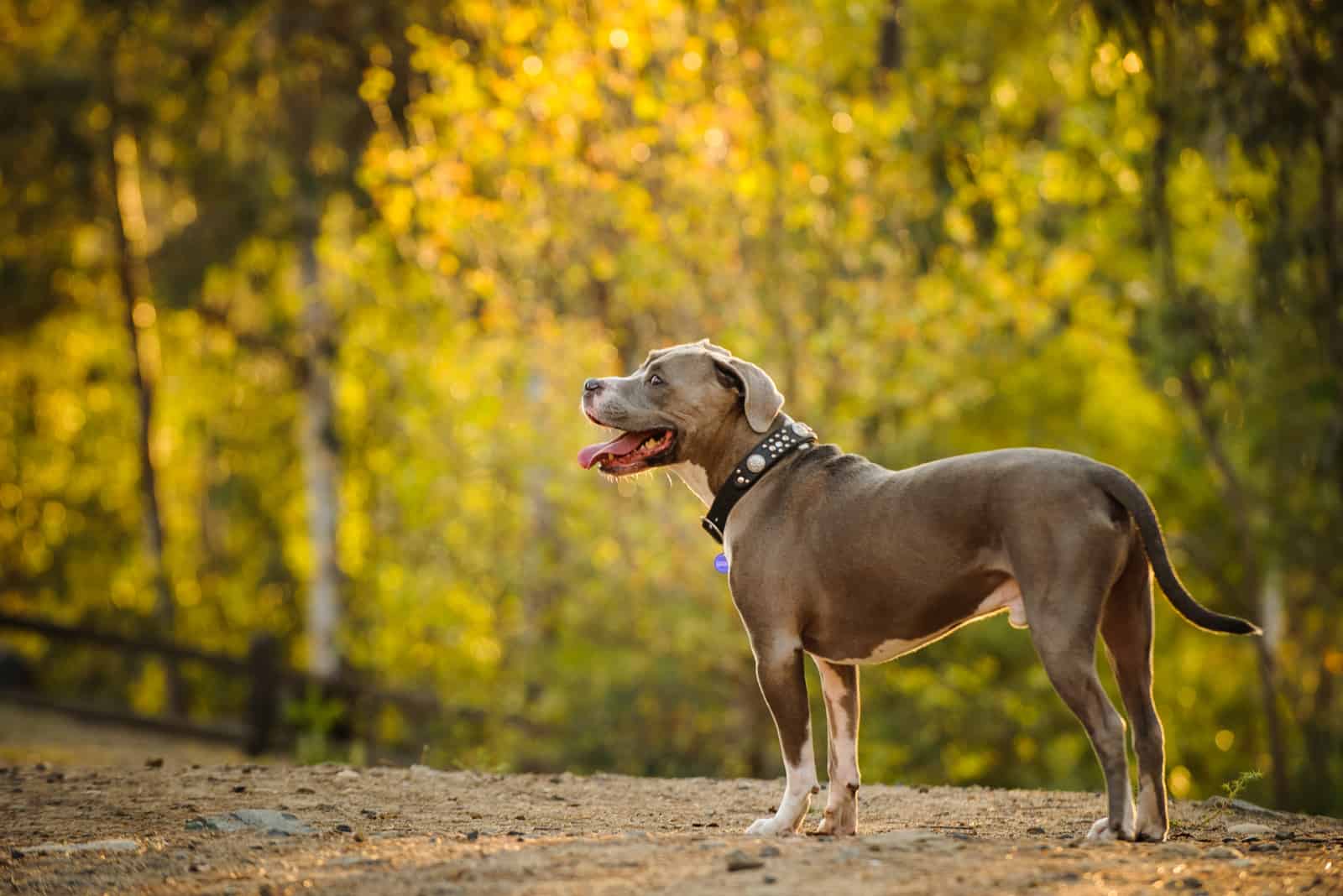
Health problems are a major factor that may stunt a dog’s growth. Proper weight gain should be slowed down because your dog is facing some big changes in its organs, and possibly even pain.
As a general rule, Pitbulls are healthy dogs without any genetic issue you should worry about. However, they still have problems that I must explain to a future Pitbull owner.
The most common health problems that may affect a Pitbull’s growth are:
– hip dysplasia
– hypothyroidism
– allergies and skin issues
– heart problems
– eye problems
Hip dysplasia is a crippling condition that strikes this dog breed. In fact, it strikes all active dogs like our Pittie. Dysplasia occurs when the bone and the joint are affected by irregular growth. This may cause arthritis and mobility issues with older dogs. Hip dysplasia is a disease that is transferred from the parent breeds, and it affects puppy growth charts significantly.
Hypothyroidism (or a lazy thyroid gland) is another health problem responsible for abnormal growth despite a dog’s strict diet. Luckily, it can be treated with supplements of hormones, so your Pittie will be back in the saddle in no time. This is a silent health problem, but you should be loud and check your dog’s thyroid gland.
Allergies, parasites, mites, and other skin issues are a major external factor of a dog’s stunted growth. More on that down below.
Heart and eye problems (i.e., cataracts) are considered problems, but can be prevented and treated without much trouble. Your dog will get medication, and it’s up to you to hand it out whenever it’s time to keep your Pittie’s heart healthy. As for eye problems, cataracts strike the most, but they’re operable if discovered in time.
Of course, these are all average health problems that may affect Pitbull growth charts. As we mentioned, the numbers in the chart are also average. It doesn’t mean that your Pittie will definitely have problems with some of the listed conditions. But, to ensure a long lifespan, it’s better to be aware of possible issues.
I didn’t mean to scare you with these facts. All dog breeds have health issues that they’re prone to more than other breeds. When you look at the big picture, Pitbulls are far healthier than Dachshunds. Being big doesn’t necessarily bring big problems.
Which Factors Are Responsible For Changes In The Growth Curve?
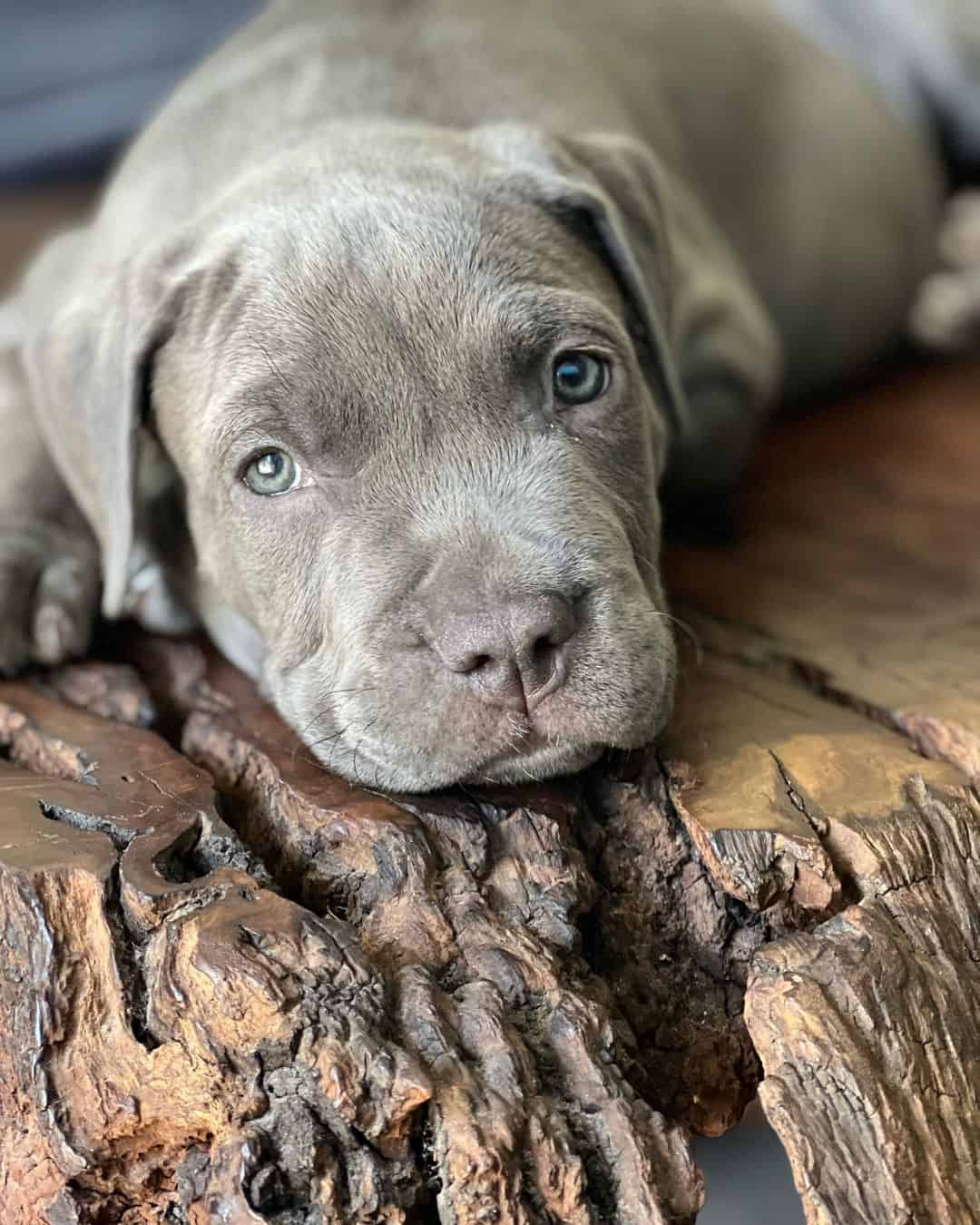
Photo from: @clyde.k9
Changes in the growth curve happen because some external or internal factor decided to play with your pup’s growth. By external factors, I mean possible body injuries, diseases that aren’t genetic, and the dog’s nutrition.
Internal factors are genetic health problems coming from the parent breeds and nutrition.
Body injuries or conditions like parasites or infections can stunt a dog’s growth and keep the growth curve steady. I can’t stress enough how important it is to take your dog for veterinary examinations, vaccination shots, and parasite treatments. Tapeworms, as common parasites attacking dogs, can do immense damage to a dog’s growth.
We can prevent lots of health problems and injuries, but we can’t prevent genetic issues. Well, not when the puppy gets to its new home. A good breeder must take care of this matter and test both parents and puppies for such problems. If your chosen breeder isn’t honest about the testing he has conducted, then he is either lying or the puppy is ill.
The last factor that affects the dog’s growth chart is nutrition. Naturally, good nutrition will boost the dog’s growth and make it healthy and thriving. However, you must be wary of what you’re feeding your dog.
I never recommend going to Costco and buying generic dog kibble in bulk. My favorites are small, family businesses that make protein-based dog food, supported with all the goodies needed for healthy growth.
Also, you can find useful advice in our article on the homemade dog food for Pitbulls.
How Long Are Pitbulls Pregnant?
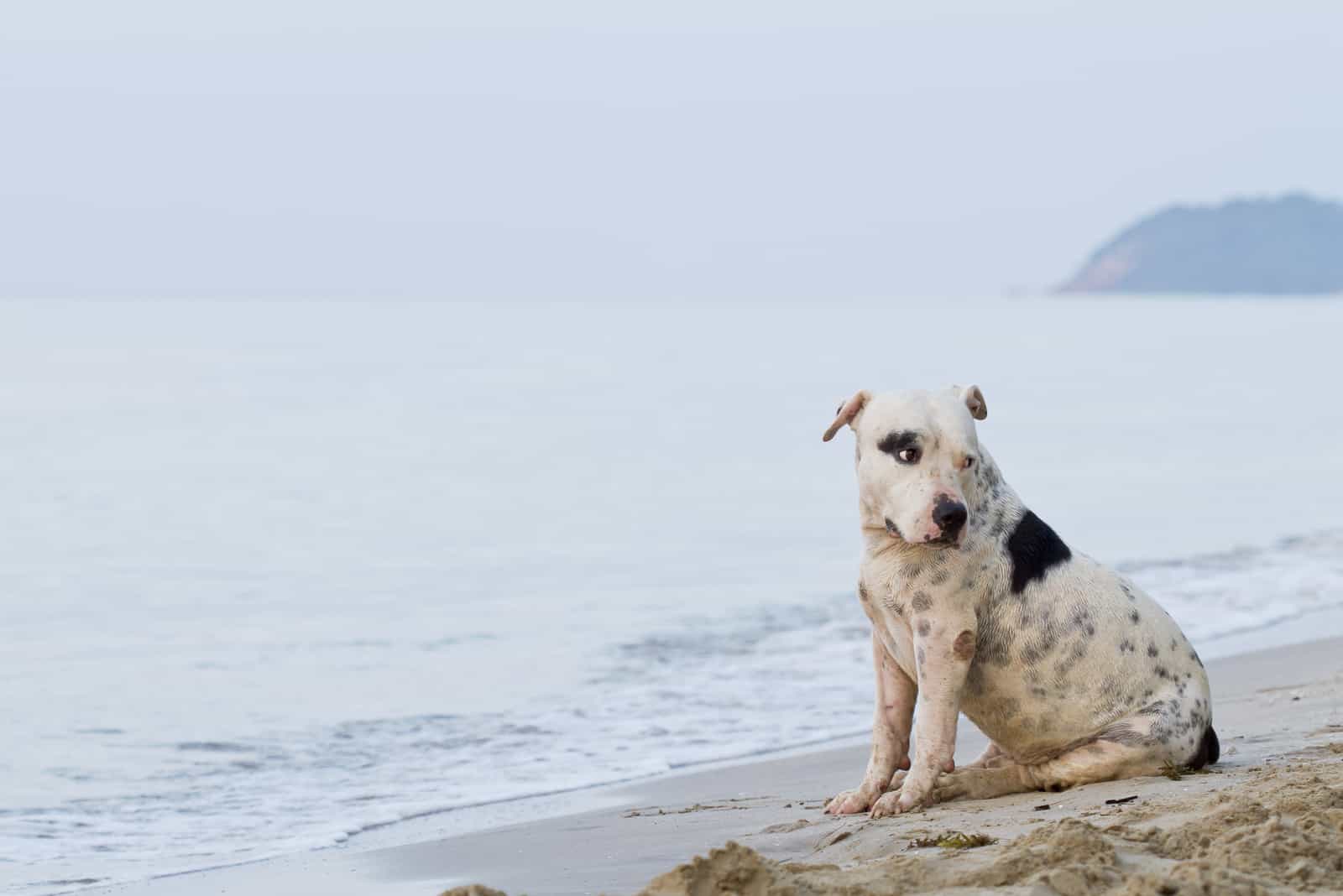
When you notice your Pittie female putting on additional weight without changing diet habits, you can expect a stork flying over your home in eight to nine weeks. That’s how long a Pitbull pregnancy lasts.
At this period, I’d like to highlight that Pitbull moms-to-be need extra special care, and naturally, regular vet checkups in order to bring healthy puppies into the world.
Lately, I’ve seen excellent kibble for pregnant and nursing dogs, so maybe giving it a try would bring more benefits than regular kibble. This kibble will help the mommy Pitbull feed many lovely baby Pitbulls.
Think about it: how much energy does it take to produce so much milk for 14 pups? If the mom eats poor-quality dog food, she’ll become exhausted. Sooner or later, the milk supply will reduce and the puppies will be left hungry.
How Big Are Their Litters?
Pitbull puppy litters vary in number from really small ones, to extremely large cases of 14 puppies! The bigger the litter; the smaller the puppies will be. Picture this: a female Pitbull has “only” 10 nipples, so she can feed 10 puppies in one session. What will the other four puppies do? Some will fight; some will take this as something that’s supposed to happen. It’s called nature’s selection. Only the strongest, fiercest puppies survive. Puppies need to show teeth to their brothers or they will be the weak links in the chain.
Although Pitbulls are a fairly large breed of dogs, their puppies are really tiny and adorable when newborn. Newborn Pitties weigh around 10 pounds, more or less.
If your female Pitbull has a large litter, and puppies are struggling to nurse, especially with bigger brothers fighting for their own nipple, you should step in. Make sure every puppy gets fed in one session, and that it gets its fair share of its mommy’s milk. Soon enough, you’ll see them all fighting for more kibble!
FAQs
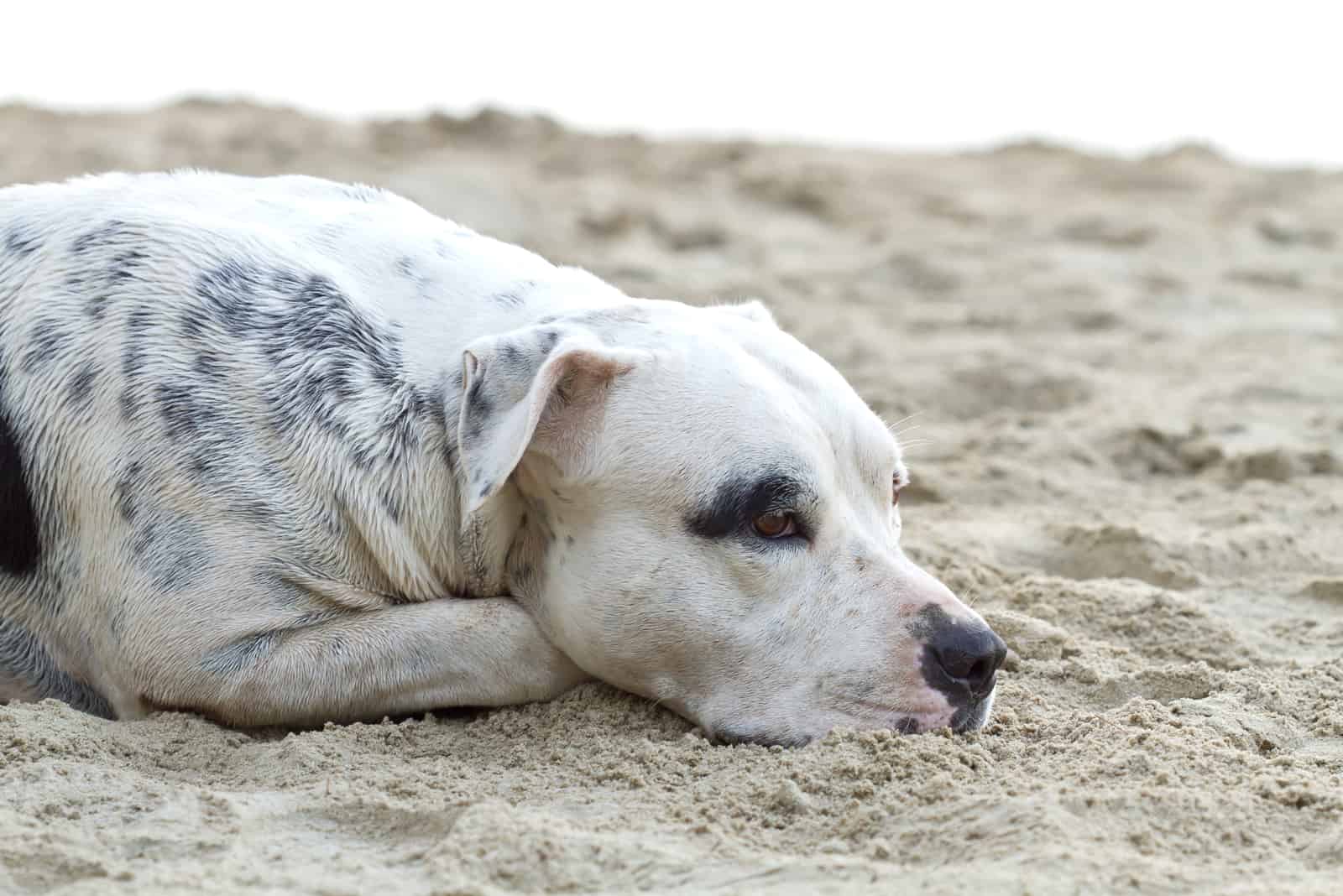
1. Do all Pitbulls have the same growth chart as other dogs?
It would be absolutely wrong to think that all dogs grow equally as fast. For starters, not every dog has the same anatomical build, nor the same lifestyle. You can’t expect large dog breeds like Rottweilers, Mastiffs, Labradors, or German Shepherds to grow like Chihuahuas. They are all different breeds!
Pitbulls, even types within the breed, have different growth curves, and thus, different adult dog weights and heights.
2. Can Pitbulls weigh 100 pounds?
Well, 100 pounds IS a lot. When you think of the Pitbull’s average weight, you’ll notice that 100 pounds would put tremendous pressure on the dog’s skeleton. Bones under pressure are prone to developing health issues, which may result in crippling pain, arthritis, or mobility problems.
3. How big does a blue-nose Pitbull get?
Guess what?
A blue-nose Pitbull is as big as a regular Pitbull! Around 75 pounds and 15” to 20″ at the withers.
You know why?
Because having a blue nose is only a matter of genetic games. It does not affect the dog’s build at all. The same goes for the popular red-nose Pitbulls.
Since we’re speaking of genetics, I must remind you that genetic health issues will affect a dog’s size. But, it doesn’t mean that every dog will have these issues. A blue-nose or a red-nose Pitbull can be as perfectly happy as any other dog, and grow according to the breed standards.
4. What’s a Pitbull’s average lifespan?
A lot of factors can affect a dog’s lifespan. Poor life quality, irregular vaccinations, no vet visits, and generic-brand dog food that is poor in nutrients will significantly shorten a dog’s life.
That’s why I urge all dog owners, not only Pitbull owners, to do their best to provide a nice, normal, and most-importantly happy life for their pups. Dogs need a steady routine, healthy food, and medical care to live the maximum number of their years.
As for our pal, Pittie, they usually live eight to 15 years. That’s fairly long, and you should have plenty of time to enjoy that Pitbull smile.
5. Will a Pitbull puppy cost me a lot?
I’m a bit amused with this question as all dogs cost money…. that is, if you want to be a decent human being and provide your dog a nice life.
In terms of the purchase price, Pitbulls can be expensive, but that’s not written in stone. I know several people that bought Pitbull puppies at a reasonable price from a trusted source. Those dogs are now boasting health!
The average Pitbull purchase price ranges from $2,000 to $20,000! Of course, the pups on the expensive end are premium Pitbulls, with championship bloodlines bred for confirmation. Pet-quality dogs are always a lot cheaper.
But, let’s go back to the expenses.
The initial buying price is only the beginning. If you’re a first-time owner, you will need all sorts of things to satisfy your dog’s needs.
Here’s your little shopping list:
– a good dog bed, possibly an orthopedic one
– a crate (if you want)
– collars
– leashes
– a harness
– a muzzle (check the laws in your area!)
– food bowls
– water bowls
– high-quality dog food
– yummy treats
– durable chew toys
The bill can become pretty high. And, where are the vet’s receipts? Is it already time for a new shot? You get it. The first year with a new dog is rough in so many ways. But, this means that it can only get better over time. Dogs don’t need new beds all the time, right?
Conclusion
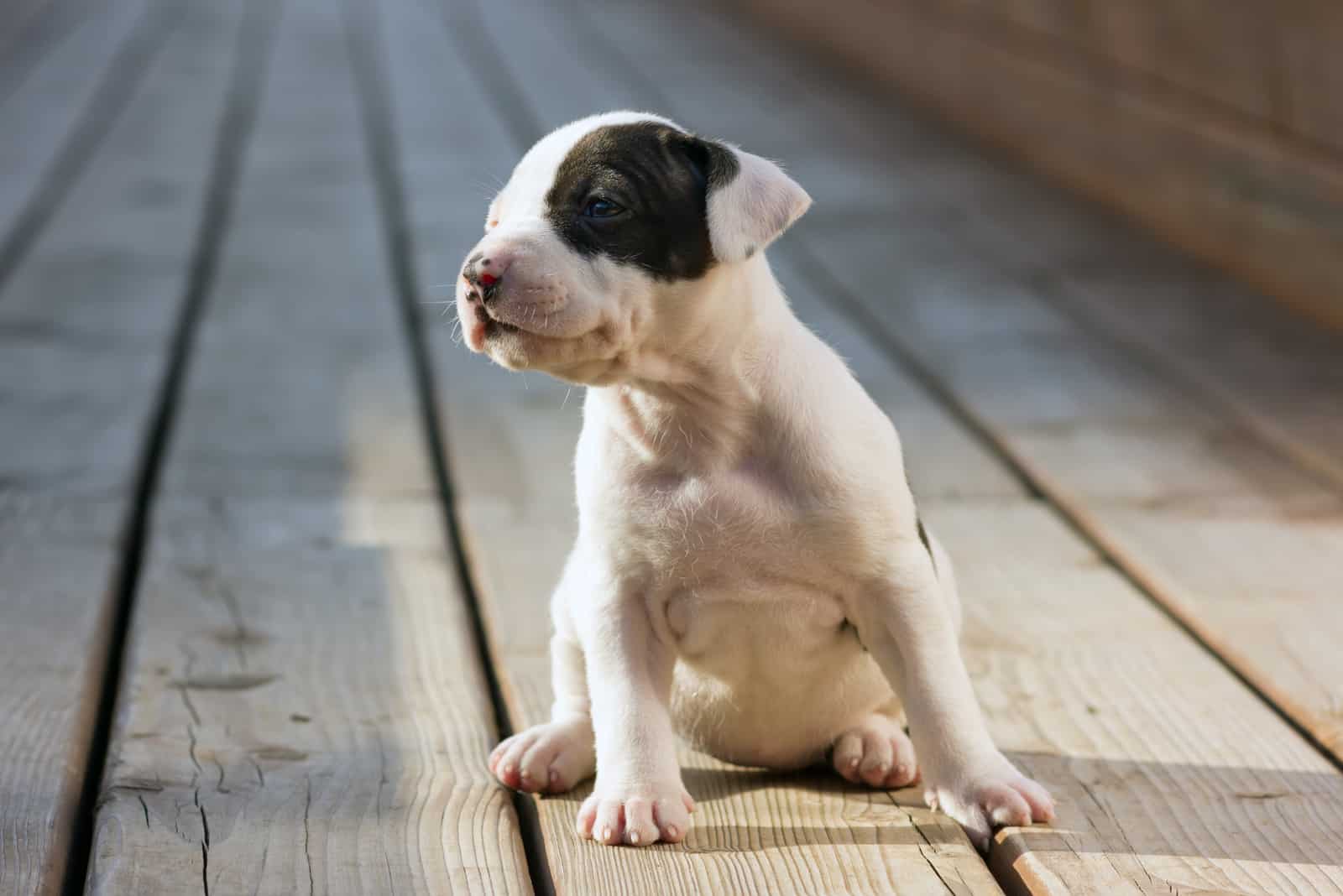
Don’t ever allow yourself to feel stressed out because your growing puppy doesn’t fit within the measurements on our Pitbull growth charts. The charts are there to give you a general idea of how a puppy will look once he becomes an adult. If every dog blindly follows the growth and size charts, we’d have dogs that all look alike. And, honestly, that would be boring.
It’s absolutely normal for a Pitbull to be chunkier and slimmer. As you now know, many factors play a vital role in deciding how big a Pitbull will be. You can’t expect a chubby puppy from slim parents. It’s possible, but there are other factors like an inappropriate diet or insufficient exercises.
Let the puppies be… puppies! Let them be happy, cheerful, and have them nibble on delicious, high-quality puppy food while they spend their days playing with their friends. They don’t stay puppies forever, and truth be told, even though we love our adult Pitties, puppy Pitbulls are simply… the cutest!
Read Next: Top 7 Pitbull Breeders In Ohio: Get Your Nanny Dog From ‘Em
